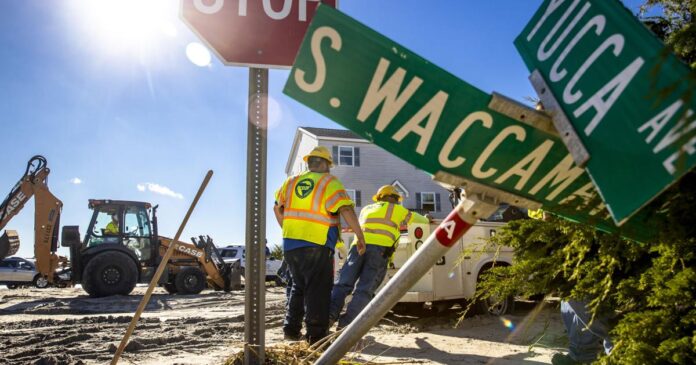The six-month-long hurricane season started June 1, a date that’s a good annual reminder to check on insurance coverage.
Last Thursday also brought some rare, positive insurance news worth sharing: Charleston County’s “Community Rating System” score has improved, and that will mean a larger flood insurance discount for residents in unincorporated areas.
The scoring system is linked to the National Flood Insurance Program, and it rewards local governments and their citizens that take steps to reduce risks. The lower the score, the larger the savings.
With a new score of 2, the nearly 10,000 flood insurance policies in unincorporated Charleston County will be discounted by 40 percent — an additional 5 percent, on top of the previous discount. The total savings amount to millions of dollars.

The discount doesn’t mean premiums will go down, because flood insurance has been getting more expensive. But it does mean paying far less than full price.
The new rate takes effect Oct. 1. Flood insurance policies don’t account for the higher discount automatically, until they renew, so the county advises homeowners to check with their carriers to get the lower price as soon as it’s available.

Charleston is among just nine counties or cities in the nation with a score of 2 or less, and it’s the only one on the East Coast.
Previously, its score of 3 was worth a 35 percent discount on flood policies. Only 11 communities nationwide have a 3 score, Folly Beach being the only other in South Carolina.
All the other South Carolina towns, cities and counties that participate in the voluntary rating program have scores of 5 or higher. That means people with flood insurance who live within Charleston County’s incorporated towns and cities get a smaller discount than those in unincorporated areas.
The Community Rating System scores for every participating community in the U.S. Those not on the list don’t get a discount on flood insurance premiums for residents.
Flood insurance is important in places like South Carolina areas because “hurricane” wind-and-hail policies don’t cover damage from rising water, even if it’s caused by a hurricane.
The start of the season is a good reminder to check coverage, and to understand it. Home insurance in coastal South Carolina is more expensive than property taxes, for most, and the deductibles can be huge.
So, in addition to having adequate coverage it’s important to know that the deductible figure is based on what the property is worth — not the amount of a potential claim.
That means a 5 percent deductible on a $400,000 house, for example, would mean the homeowner pays the first $20,000 of any wind and hail claim. When thinking about appropriate coverage, consider how to pay for such a potential deductible.
Of course, the lower the deductible, the higher the premiums.

Renters will want to check the insurance policies that cover everything inside their homes (renters’ insurance), and don’t forget about vehicles.
Every time there’s a big storm plenty of cars get ruined by flooding, but automobile insurance only pays out for that type of damage if it includes “comprehensive” coverage.
Hurricane preparedness means having a plan to safeguard financial information and important documents.
If you had to evacuate the area, and a hurricane left you with no home to return to, what would you wish you had brought? Ideally, a “go” box should include important documents, such as insurance policies, and things that would be hard to quickly replace, such as passports.
On Dec. 1, when hurricane season is over, hopefully we’ll all breath a sigh of relief, knowing we hoped for the best and prepared for the worst.
Reach David Slade at 843-937-5552. Follow him on Twitter @DSladeNews.





![[Toyota Times] From Strengthening Foundations to Boosting Productivity – Toyota Focuses on Break-Even Volume [Toyota Times] From Strengthening Foundations to Boosting Productivity - Toyota Focuses on Break-Even Volume](https://businessfortnight.com/wp-content/uploads/2025/11/Toyota-Times-From-Strengthening-Foundations-to-Boosting-Productivity-Toyota-218x150.jpg)




























